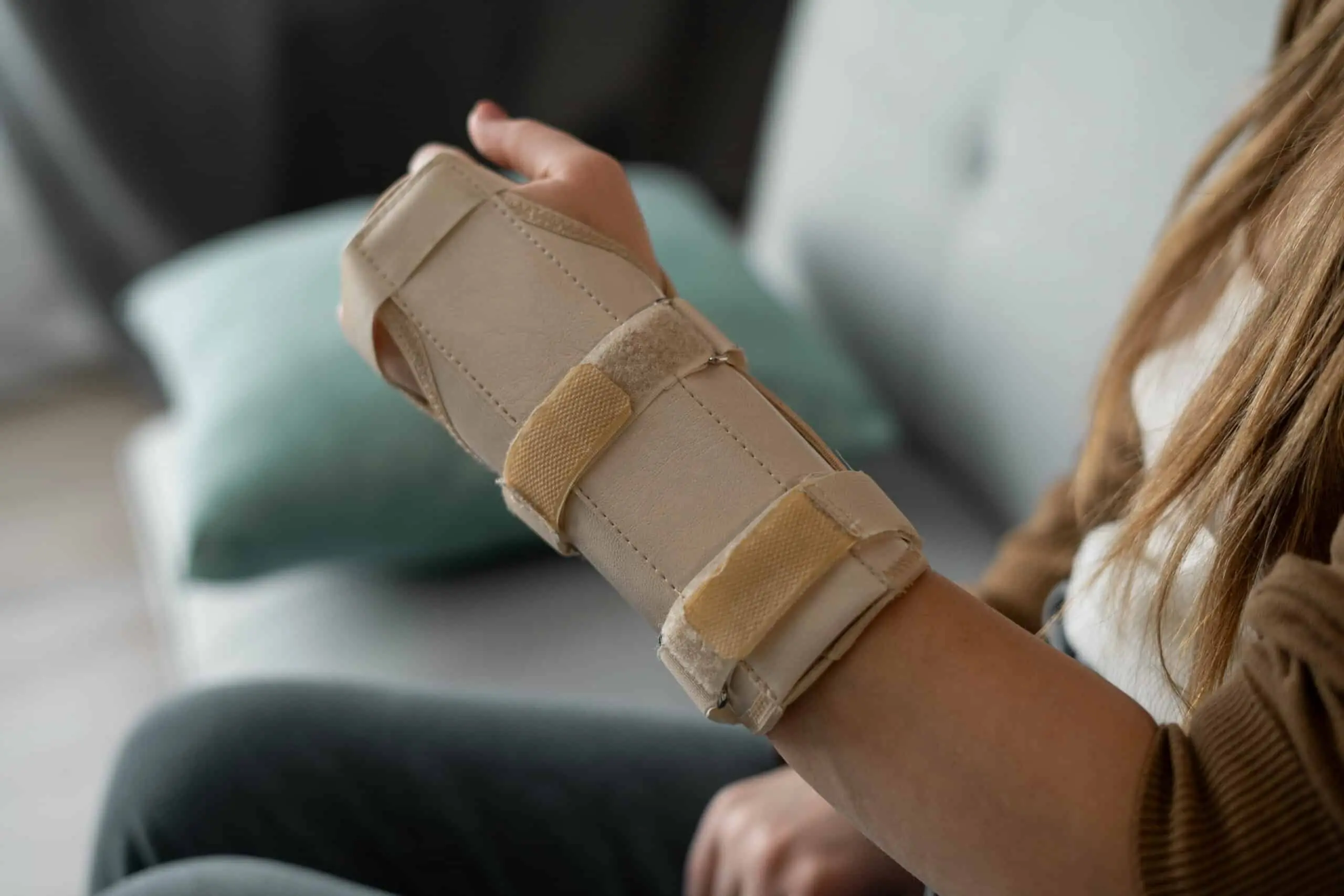- Home
- Conditions We Treat
- Carpal Tunnel
Carpal Tunnel Syndrome (CTS) is a common condition that impacts hand function and overall quality of life. This article serves as a comprehensive guide to understanding how physical therapy plays a key role in the treatment and recovery process. From relieving pain and reducing inflammation to restoring strength and mobility, physical therapy offers a non-invasive approach to managing Carpal Tunnel Syndrome. Whether you’re newly diagnosed or seeking alternatives to surgery, this resource will empower you with knowledge about effective techniques, targeted exercise, and the benefits of professional guidance in your recovery from Carpal Tunnel-related symptoms.
Carpal Tunnel Syndrome occurs when the median nerve, which runs from your forearm through your wrist and into the palm, becomes compressed.1 The narrow passageway in which the median nerve and tendons pass through is known as the carpal tunnel. The carpal tunnel is a rigid narrow tube composed of ligaments and bones that is located at the base of the hand. The median nerve provides sensation to the thumb, index finger, middle finger, and the lateral part of the ring finger. It also controls muscles at the base of the thumb. Compression of the median nerve leads to numbness or tingling in the hand, pain, as well as decreased grip strength and diminished motor control. We will dive deeper into the symptoms of CTS later in this article.
Carpal Tunnel Syndrome (CTS) occurs in 3-5% of individuals in the US and is the most common entrapment neuropathy, accounting for 90% of all neuropathy cases.2 Anyone can suffer from CTS however, it is more common in women as compared to men, with a 3:1 ratio. CTS most commonly develops in adults between the ages of 30 and 40. Those with occupations that require repetitive hand and wrist movements- such as typing or construction work- are at an increased risk of developing CTS.
CTS can significantly impact one’s quality of life. Due to symptoms such as numbness and decreased hand grip strength, it can be difficult to perform activities of daily living (ADLS) such as buttoning your shirt, gripping a steering wheel, typing, and even eating. Over time, untreated CTS can lead to muscle wasting as well as permanent nerve damage in the hand, further limiting function. These symptoms can interfere with work productivity as well as personal independence thus, reducing an individual’s overall quality of life.

As previously stated, CTS occurs when the median nerve becomes compressed as it passes through the carpal tunnel. There are several factors that can contribute to this narrowing or increased pressure within the carpal tunnel.3 Below are some of the most common causes and risk factors associated with the development of CTS.
CTS presents with a range of symptoms that typically have a gradual onset and may worsen over time if untreated. Those with CTS typically report pain and numbness in the thumb, index, middle, and part of the ring finger, a sensation that is often described as “pins and needles.” This pain and discomfort can also radiate into the hand, wrist, and forearm, often worsening at night. Individuals with CTS might find relief from these symptoms by shaking or flicking their hands.
In advanced or chronic cases, an individual might experience thenar wasting- muscle wasting at the base of the thumb. This can lead to significant functional limitations due to decreased thumb strength. In these advanced cases, it is common for an individual to suffer from sensory loss, decreased grip strength, clumsiness, as well as difficulty completing functional tasks such as driving, eating, and dressing. Bilateral CTS is often observed; however, it typically develops in the dominant hand first.
If you are experiencing any of the symptoms mentioned above, it is important to seek medical assistance early on. A physical therapist (PT) can perform a thorough evaluation which consists of obtaining a past medical history as well as completing a hands-on assessment of strength and range of motion (ROM) of the hand, wrist, and arm. A PT will also assess symptom patterns and posture. Special tests such as the Phalen’s test, Tinel’s sign, and nerve sensation tests are also used to provoke symptoms to confirm median nerve involvement. PTs will take into consideration any contributing factors such as work ergonomics, occupational hazards, and neck or shoulder dysfunction that could be contributing to symptoms.
If symptoms are severe, worsening, or not responding to physical therapy interventions, referral to a physician for further testing and potential medical intervention is appropriate. A physician might order a Nerve Conduction Velocity Test (NCV) to confirm a CTS diagnosis.4 This test is a non-invasive measure of how well the median nerve is conducting electrical signals and can help determine the severity of nerve compression.

Treatment for CTS typically begins with non-surgical interventions such as PT, that are aimed at relieving pressure on the medical nerve while improving function.5 These approaches are often effective, especially in mild to moderate cases. However, if symptoms persist or worsen, surgical intervention is typically considered to release tension on the compressed nerve. Carpal tunnel release surgery is one of the most common surgeries in the US.
Surgical treatments for CTS, known as Carpal Tunnel Release, are often done in an outpatient setting with general or local anesthesia. There are two types of surgical options, open surgery and endoscopic surgery.
Following carpal tunnel surgery, your wrist will likely be placed in a splint or bandage for 1-2 weeks, during this time period you’ll be encouraged to move your fingers to reduce stiffness and inflammation. Pain and swelling are common but can usually be managed with oral medication and by keeping your hand elevated while sleeping. Once the splint is removed, physical therapy begins to assist in restoring strength and ROM in the wrist and hand. Full recovery can take anywhere from a few days to several months.

Preventing CTS involves minimizing stress on the wrist and hand, especially during repetitive tasks. Simple lifestyle and ergonomic adjustments can go a long way in reducing strain on the median nerve and lowering the risk for CTS development. Below are several practical strategies to support your wrist as well as long-term hand/wrist health.
Managing life with CTS involves more than just treating the symptoms, it requires a proactive and informed approach. Coping strategies such as using ergonomic tools, modifying activities and incorporating regular rest breaks and wrist stretches can help in reducing daily discomfort. During an exacerbation, applying ice, resting the affected hand, and using a wrist splint may provide relief and prevent symptom progression.
It’s important to recognize that each case is unique, and a personalized treatment plan developed by a healthcare provider, such as a PT, is key to long term success. Once a home exercise program is established, it is important to stay consistent to keep symptoms at bay. PTs, physicians, and occupational therapists (OT) offer tailored interventions and ongoing support. PTs and OTs can help improve strength, mobility, and function, while physicians may recommend additional interventions if symptoms persist. Seeking professional guidance not only helps manage current symptoms but also promotes overall hand and wrist health for long term management.
Physical therapy is a highly effective, non-invasive treatment for CTS especially in early to moderate stages of the condition. The primary goal of physical therapy in CTS management is relieving pressure on the median nerve while restoring wrist and hand function and reducing the need for surgical intervention. The approach of the PTs at Confluent Health clinics is rooted in developing a personalized and evidence-based plan, ensuring that treatment is tailored to the individual’s lifestyle and goals.
Treatment plans often include manual therapy to mobilize soft tissues and improve nerve gliding as well as therapeutic exercises to strengthen the wrist and hand. A few examples of mobility exercises 6 used in CTS management include wrist rotations, wrist extension stretch, wrist flexion stretch, median nerve glide, thumb stretch, prayer stretch, and tendon glides. Strengthening exercises for carpal tunnel focus on improving the strength of the wrist extensors, flexors, and intrinsic muscles of the hand. A few examples include, ball squeezes, weighted wrist flexion and extension, and wrist lift.7 Ergonomic education and activity modification are also key components of care, helping patients make lasting changes. With an individualized care plan, many patients report significant improvements in pain, grip strength, and overall function. These patient outcomes highlight the value of early intervention and consistent treatment. Many of these individuals are able to return to their daily activities with confidence and comfort successfully.
If you’re experiencing hand or wrist pain, numbness, or tingling, don’t wait for symptoms to worsen– early intervention is key. Physical therapy offers a safe, effective, and personalized approach to the management of CTS. At Confluent Health, our experienced clinicians are ready to help you take control of your symptoms and get back to doing what you enjoy most. Book a consultation today to begin your journey to life long hand health and pain relief. Find a Confluent Health clinic near you!
It may be, but there are other common causes that your PT can help rule in/out to better direct your treatment plan.
Yes, your PT can help you with your desk set up to make sure your work space is optimal and you are avoiding certain repetitive movements.
Resources